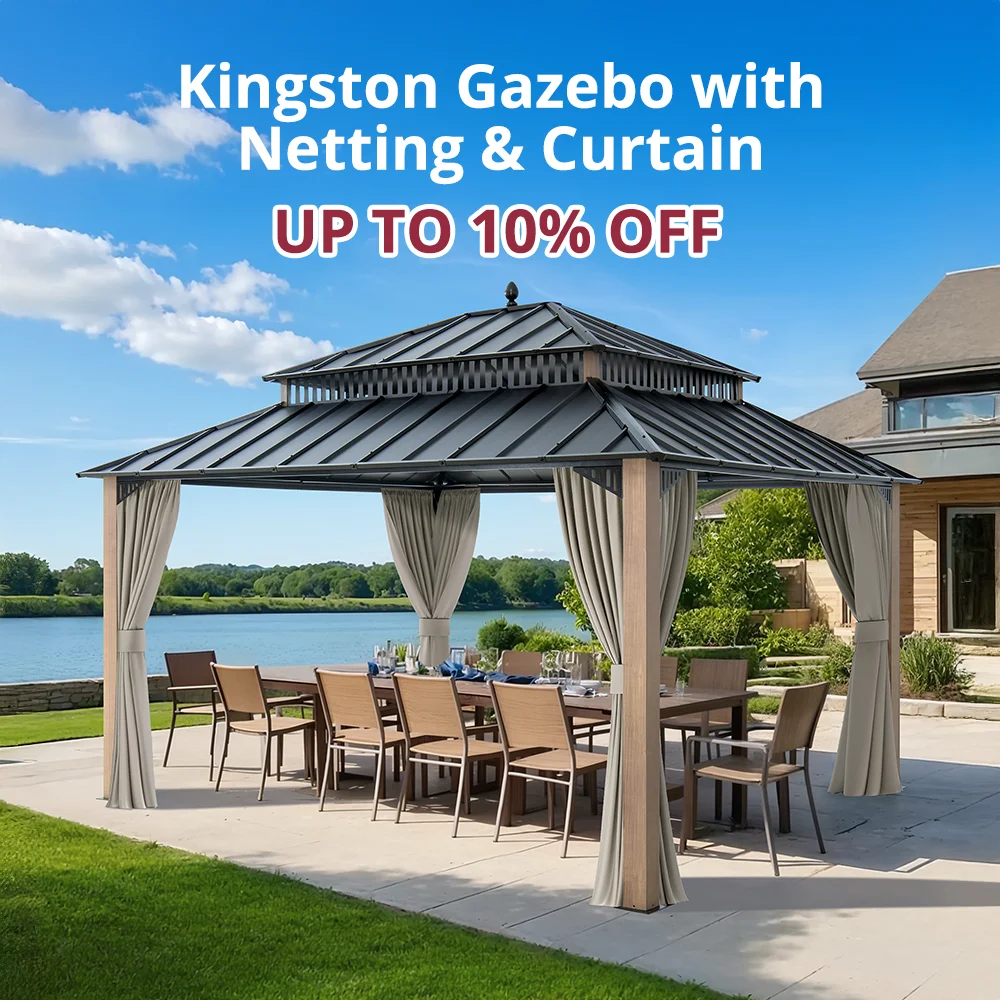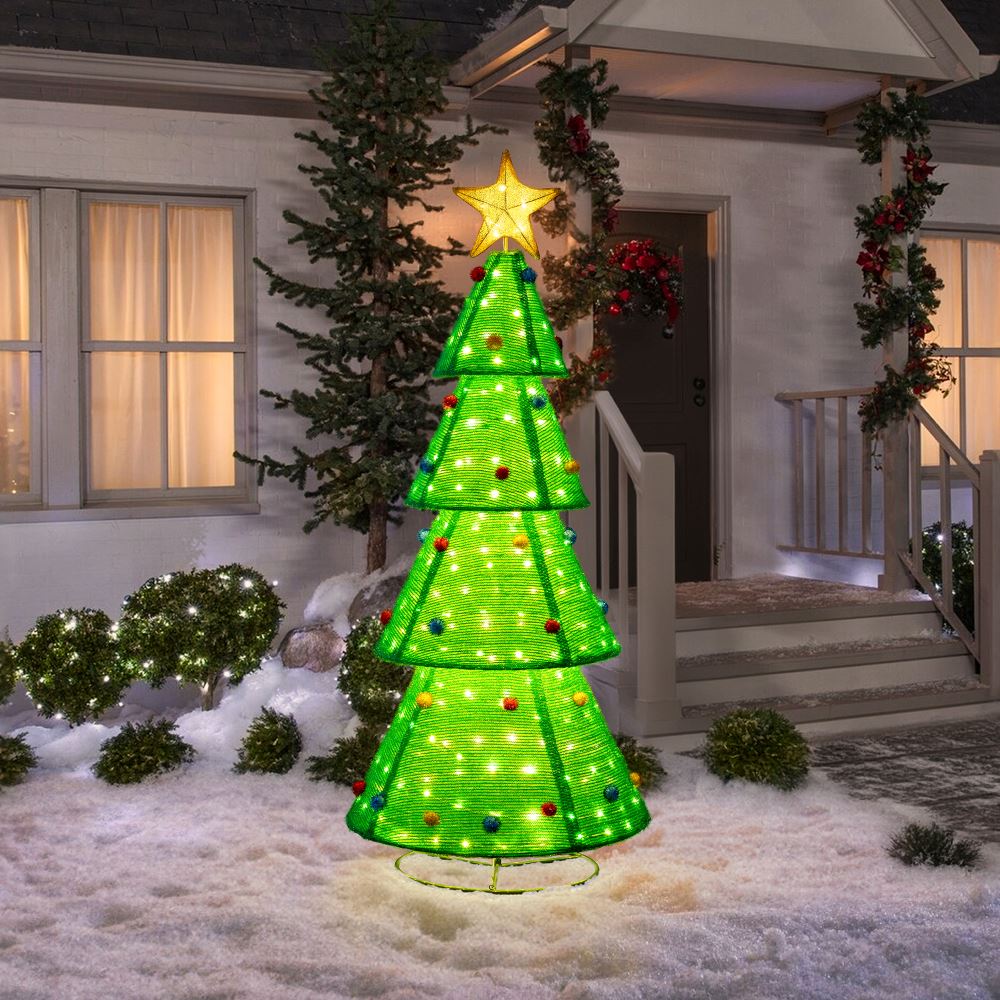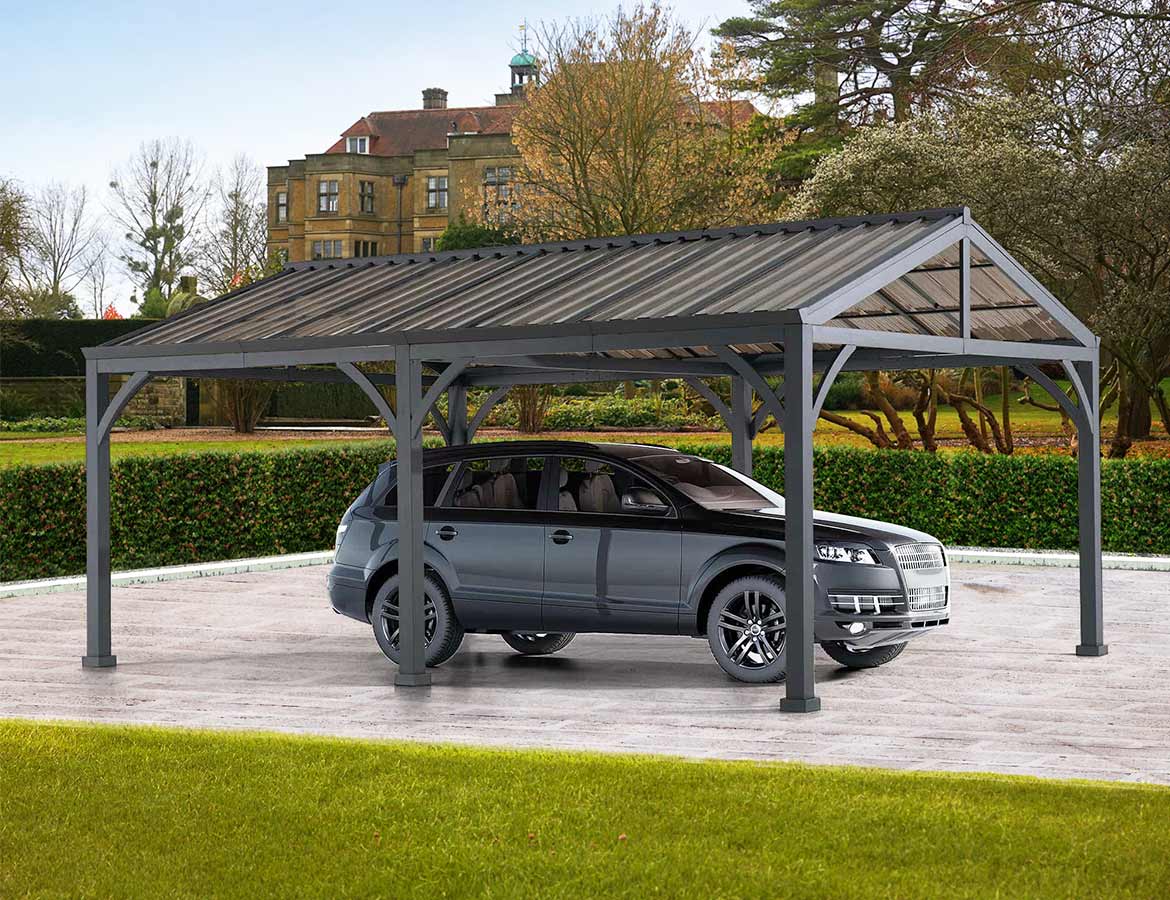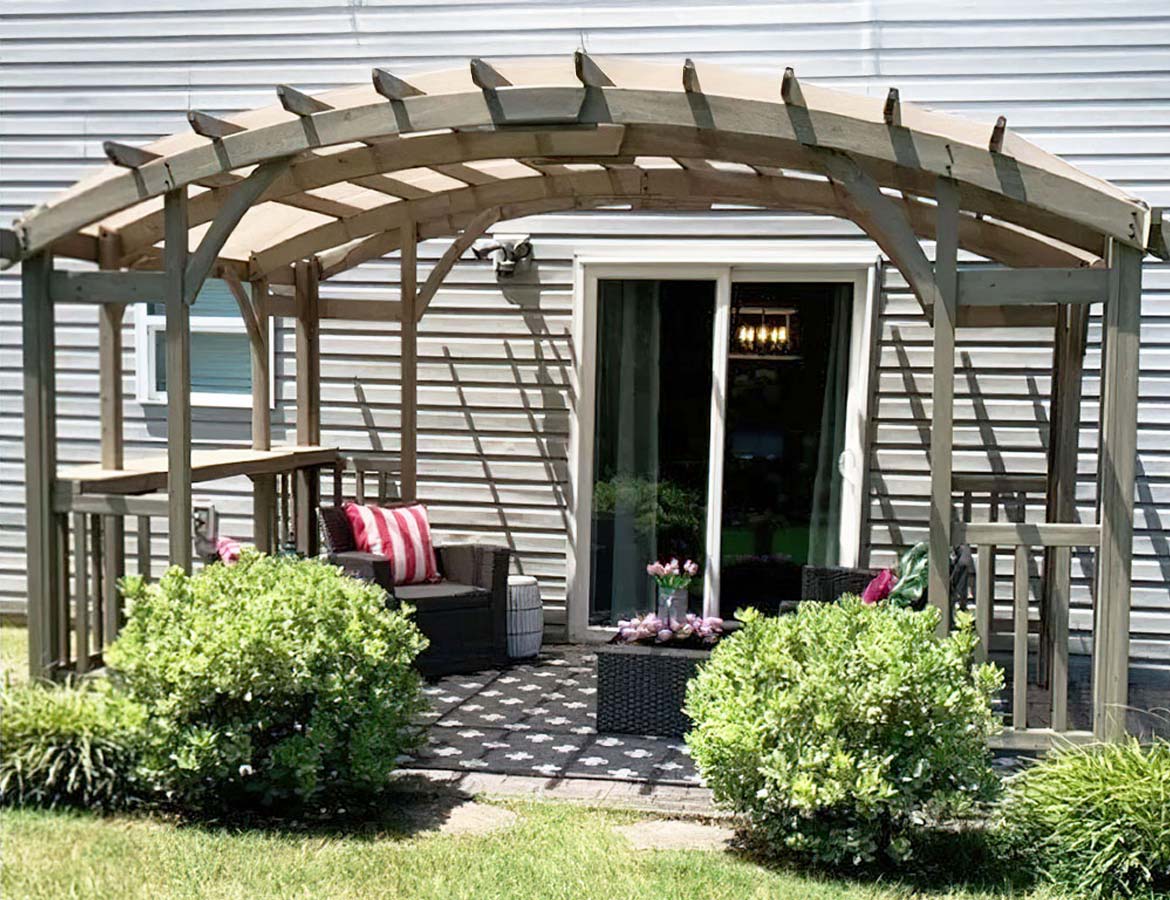1. Why Choosing the Safest Firepit for Your Deck Matters
1.1 The Fire Risk Landscape
Decks—typically made of wood or composite materials—are inherently flammable. Even pressure-treated or “fire-resistant” decking can ignite under intense or prolonged heat. Using the wrong firepit can lead to:
Deck scorches and stains
Warping or splitting of boards
Structural damage beneath the surface
Safety hazards such as accidental fires
1.2 Benefits of Choosing a Safer Option
By using a firepit designed for wooden decks, you can enjoy:
Instant ambiance without risk
Comfortable portability and ease of placement
Clean, odorless flames
Improved safety and reduced stress, especially with families or pets
A safer firepit means more relaxed evenings outdoors and a deck that stays intact for years.
2. Propane Firepit vs. Wood-Burning: A Decision-Making Crossroads
2.1 What Makes Propane a Safer Choice
Many homeowners prefer propane firepit units for deck use due to these clear advantages:
No sparks or embers
Instant flame control via knobs or remote
Zero ash or residue
No wood storage required
These features drastically reduce the risk of fire and deck damage—particularly when using models designed for decks.
2.2 Wood-Burning Alternatives: The Risk Factor
By contrast, wood-burning firepits on decks bring hazards like:
Unpredictable embers
High temperatures radiating downwards
Complex smoke and soot patterns
Need for ash cleanup and safe wood storage
While stylish in open yards, these challenges make them less ideal for wooden decks—unless extensive safety precautions are taken.
3. Propane Fire Pit Table: Combining Style and Safety
3.1 What Is It?
A propane fire pit table offers a dual-use surface and flame. It blends functional furniture with a heating element, often with:
Built-in propane storage (sometimes hidden propane tank designs)
Stainless steel burners and decorative rock or glass fills
Integrated ignition systems
3.2 Why It’s Ideal for Decks
These units are suited to decking for several reasons:
Even heat distribution
Deck-safe burner housings
Controlled flames and easy shut-off mechanisms
Portable design for off-season storage or positioning flexibility
4. Choosing the Right Model: Features That Matter
4.1 Propane Firepit and Tank Design
Look for:
Hidden propane tank compartments to maintain clean aesthetics
CSA or UL certification for safety
Secure hose and regulator systems
4.2 Burner Design and Flame Control
Choose units with:
Tempered steel or brass burners
Electronic ignition and adjustable flame control
Flame setback (height control) to reduce radiant heat on the deck surface
4.3 Tabletop Materials
Safer surfaces include:
Tempered glass
Natural stone tops
Powder-coated steel that reflects heat upward
Avoid combustible materials like untreated wood or plastic.
5. Heat Control Measures for Your Deck
5.1 Use Protective Mats or Pads
Always place a heat‐resistant mat—rated for firepit use—beneath your unit to protect the deck surface.
5.2 Maintain Clearance
Follow manufacturer instructions, but general safety clearances are:
18″ from combustible surfaces at minimum
12″ above the flame to any non-heat rated covering
Keep surrounding furniture and plants 3–4 feet back
5.3 Incorporate Fire Pit Spark Screen or Cover
Although propane firepit units do not generate embers, a spark screen or protective glass can reduce radiant heat and prevent spillage of flame media like ceramic logs or glass.
6. Essential Accessories for Safer Use
Fire Pit Poker: Helps manage flame media safely
Ignition or Extension Tools: For easier control at a distance
Protective Cover: Keeps rust and debris off the firepit
Water or Fire Extinguisher: For emergencies—always keep these nearby
Using the right tools ensures safe, responsible operation every time.
7. Installing a Firepit with Hidden Propane Tank on a Deck
7.1 Site Prep
Choose level, stable part of the deck
Confirm deck structure supports the added weight (check with engineer if unsure)
7.2 Functional Setup
Shield from wind with barriers if needed (still maintain clearance)
Make sure ventilation from the hidden propane tank is unobstructed
7.3 Professional Connections
If your unit has complex tank connections or remote line hookups, hire a certified technician to ensure safe installation.
8. Backyard Fire Pit Ideas That Complement Deck Safety
Make your deck stylish and safe with these creative ideas:
Install matching patio heaters for zones far from the firepit
Use backyard firepit ideas like stone-inlays or decorative gas feature walls—but maintain deck code
Surround the firepit with built-in seating that includes heat shielding
Place potted greenery to soften edges and protect walkways
All ideas should respect the deck’s heat clearance and structural limits.
9. Propane Firepit vs Outdoor Propane Fire Pit
9.1 Firepit for Deck vs. Outdoor Surround
Any outdoor propane fire pit can technically be used on a deck—so long as the precautions above are observed.
9.2 The Added Assurance of Designated Deck Units
Flame setback systems
CSA or UL certification specifically for decks
Removable or covered propane tanks designed to prevent leaks or overflow
These features make propane firepit models safer for elevated wooden surfaces.
10. Maintenance & Responsible Use
10.1 Year-Round Care
Clean burner and tabletop before storage
Inspect hoses and fittings
Cover unit in off-season
10.2 During Use
Keep tipped ignition off until ready
Never leave the firepit unattended
Keep fire pit poker and other tools at hand
11. Common Pitfalls & Myth Busting
Myth1: Gas firepits don’t damage decks—False. They radiate heat and must be protected.
Myth2: A flame screen is unnecessary—False. Even img-like radiant shields aid safety and compliance.
Myth3: All firepits are deck-safe—False. Only those rated for decks (or heavily modified wood-burners) are truly safe.
12. Product Spotlight: Top Deck-Safe Firepit Options
12.1 Propane Firepit Table
Stylish and functional: decorative tabletop with safety-certified burner.
12.2 Fire Pit with Hidden Propane Tank
Clean aesthetic and safe fuel storage—great for uncluttered decks.
12.3 Outdoor Propane Fire Pit (Stand-Alone)
Portable, adjustable burners with CSA approval—ideal for customization.
13. Putting It All Together: Sample Deck Firepit Setup
Choose CSA-approved propane firepit
Place on fire-resistant mat set on galvanized steel stand (optional)
Use fire pit poker for safe flame maintenance
Surround area with protective clearance, seating, and wind screens
Have a spark screen or cover readily available
14. Frequently Asked Questions
Q: Can I use a fire pit on composite decking?
A: Yes, if combined with heat mats and deck-safe certifications.
Q: Is propane cheaper than wood for fire?
A: Propane costs more per BTU, but less cleanup and zero ash storage.
Q: Do I need a permit?
A: Check local regulations—propane firepits built into decks often require inspection.
15. Final Thoughts: Enjoy Ambiance & Safety in Harmony
For beautiful, safe evening enjoyment, the propane firepit table with a hidden propane tank is the best choice for wooden decks. Back up fan favorite with proper placement, accessories, and annual maintenance—and your firepit becomes a classic comfort zone.
Whether you long for quiet nights or memorable gatherings, choosing the right firepit today ensures your deck—and everyone you share it with—remains safe, stylish, and unforgettable.






Leave a comment
All comments are moderated before being published.
This site is protected by hCaptcha and the hCaptcha Privacy Policy and Terms of Service apply.